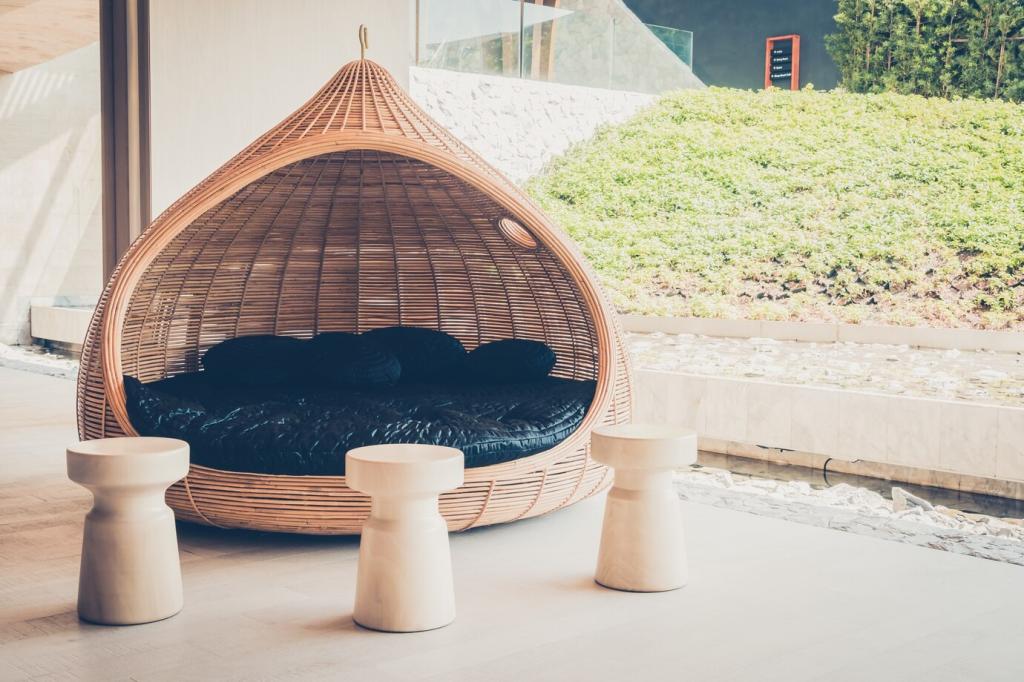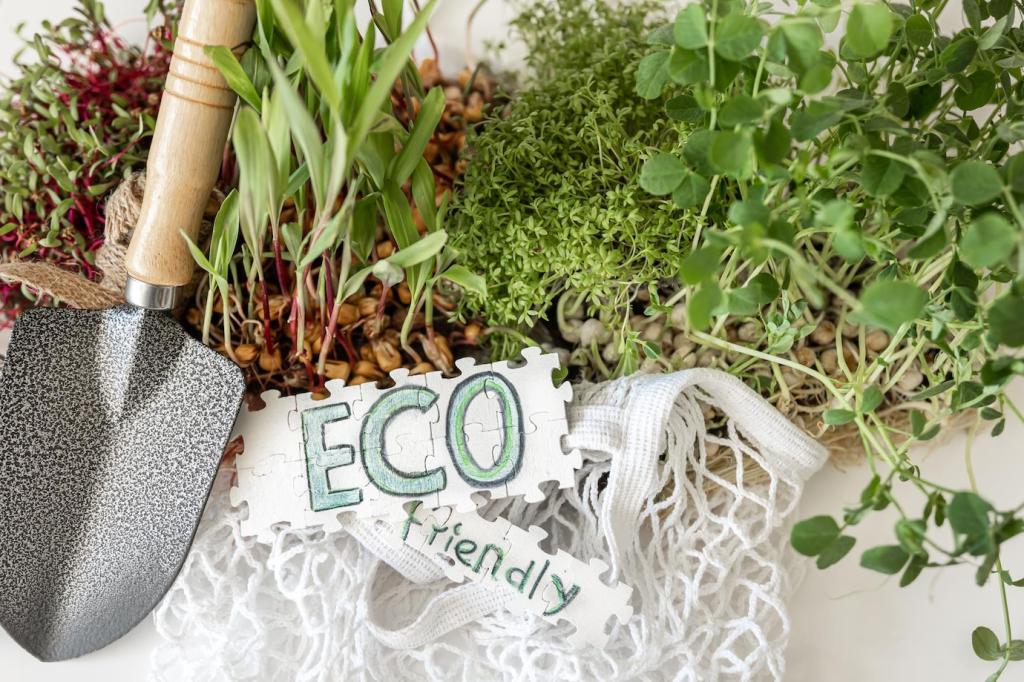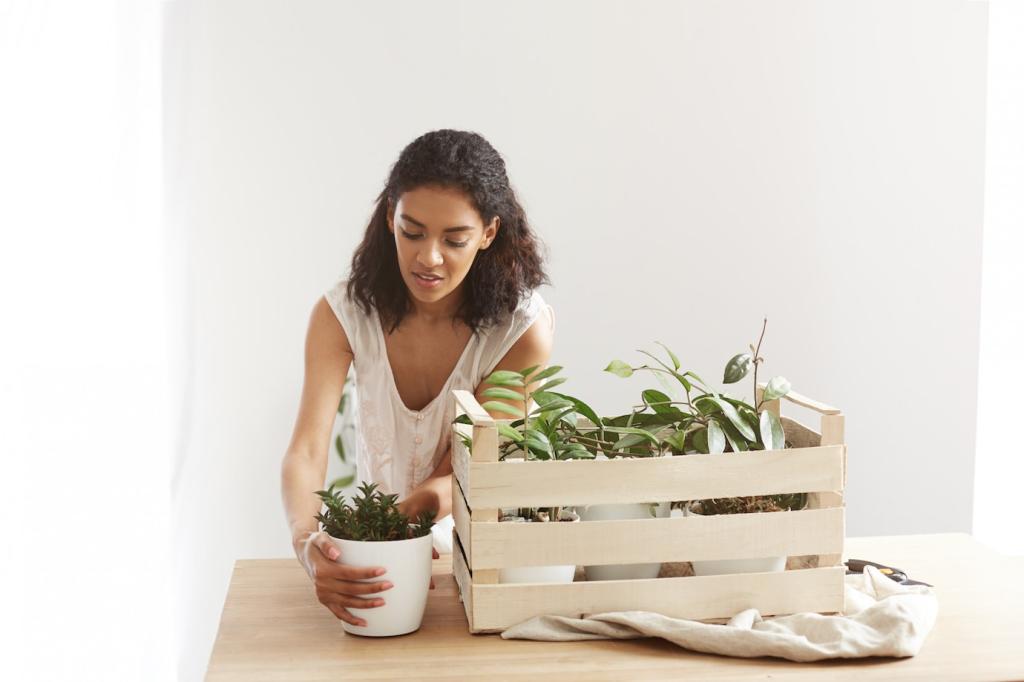Designing Tomorrow: Biodegradable and Compostable Furniture Materials
Selected theme: Biodegradable and Compostable Furniture Materials. Discover how thoughtful design, living materials, and circular practices can transform everyday furniture into pieces that nourish the earth at the end of their lives. Subscribe to follow our journey and share yours.
Why Biodegradable and Compostable Materials Matter in Furniture
From Waste to Soil: A Circular Promise
Biodegradable and compostable furniture materials can return valuable nutrients to the earth rather than lingering as waste. When thoughtfully designed, your chair’s final chapter enriches gardens, reduces methane emissions, and helps communities build healthier, more resilient ecosystems.


Understanding Timeframes and Conditions
Compostability depends on temperature, moisture, oxygen, and microbial life. Some materials break down in home compost; others require industrial facilities. Knowing the difference prevents greenwashing and ensures your furniture truly fulfills its regenerative promise. Ask us anything—let’s demystify it together.
Mycelium Panels and Foams
Mycelium grows through agricultural waste, forming lightweight, compostable panels and foams. Designers press, dry, and heat-treat it for dimensional stability. The result is airy yet sturdy furniture components that return to soil with dignity when their service ends.
Agri-Waste Composites (Hemp, Flax, Bagasse)
Hemp hurds, flax shives, and sugarcane bagasse can be bound with bio-based resins to create strong, compostable boards. They lock carbon drawn from the sky into functional surfaces, turning byproducts into beautiful furniture with a clear, restorative end-of-life.
Designing for Disassembly and End-of-Life
Fasteners that Respect the Soil
Favor mechanical joinery—wooden pegs, removable screws, and press fits—over permanent petrochemical adhesives. When components separate cleanly, biodegradable and compostable furniture materials can be sorted, repaired, and composted without contamination, preserving the integrity of both materials and soil.
Finishes That Return to Nature
Choose plant-based oils, beeswax, shellac, and casein paints that do not introduce toxins. Thin, breathable finishes protect surfaces while allowing composting microbes to work later. Share your finish experiments—we love hearing which blends held up without compromising compostability.
Clear Labels and Return Paths
Attach discrete labels explaining end-of-life steps: home compost, municipal compost, or take-back. QR codes can link to disassembly guides. Clear instructions keep biodegradable and compostable furniture materials out of landfills and empower users to complete the circle confidently.
Durability Without Toxicity
Moisture and UV Management
Use breathable finishes, edge sealing, and thoughtful placement to protect biodegradable and compostable furniture materials from water and sunlight. Simple habits—coasters, shade, and regular care—extend service life without resorting to persistent chemicals or synthetic laminates.
Repair Culture Beats Replacement
Design in replaceable surfaces and accessible fix points. Patch dents with compatible fillers, refinish with natural oils, and swap worn components. A repairable piece keeps biodegradable and compostable furniture materials in use longer, lowering environmental impact and saving money.
Tested in Real Homes
We prototype stools and side tables in busy kitchens and studios, recording scuffs, spills, and sun exposure. These trials sharpen our recommendations so your biodegradable and compostable furniture materials survive breakfast chaos and still compost beautifully years later.
Standards, Certifications, and Honest Claims
Look for EN 13432, ASTM D6400, TÜV OK compost, and BPI certifications. These standards define conditions and timelines. When selecting biodegradable and compostable furniture materials, third-party validation reduces guesswork and protects you from exaggerated or misleading claims.
Standards, Certifications, and Honest Claims
Ask for safety data sheets, ingredient lists, and end-of-life testing. Responsible suppliers trace fibers, resins, and finishes, and disclose additives. Transparency ensures biodegradable and compostable furniture materials meet your ethical and practical expectations before they enter your home.


Stories from the Workshop
A mycelium-cored stool handled a birthday crowd, then dried overnight without warping. Light scuffs buffed out with oil. Months later, it remains sturdy—evidence that compostable furniture materials can deliver delight, strength, and end-of-life responsibility simultaneously.


Stories from the Workshop
We built a baby’s shelf from hemp composite and bio-based binder, finished with linseed oil. Years later, it became garden mulch in a municipal compost stream, transforming into soil that now nourishes tomatoes the family harvests together.
Get Involved: Community Composting and Maker Challenges
Set Up a Take-Back Loop with Local Composters
Contact your municipal or private composter to verify accepted materials and contamination rules. Together, design a take-back process so furniture made from biodegradable and compostable materials completes its journey responsibly instead of drifting into landfill limbo.
Host a Fix-and-Finish Night
Invite friends to mend scratches, refresh finishes, and swap repair tricks using safe, plant-based products. Build confidence in caring for biodegradable and compostable furniture materials, and celebrate the beauty of maintenance over mindless replacement in your community.
Monthly Theme Challenge: Build One Compostable Object
Each month we propose a small project—stool, tray, or shelf—using biodegradable and compostable furniture materials. Share your sketches, sources, and results. We’ll spotlight standout builds and compile open guides so others can replicate your success.
